There are a number of Summaries of ‘Frameworks’ – short, medium, and longer.
This is a one of the Summaries.
There is also a sub-list of Summaries composed at various times (required for various targets).
Dr. Peter Ward
peter@magicbrowser.co.uk
https://www.magicbrowser.co.uk
Summary
‘Frameworks’ is a way – a methodology – for structured thinking, and a mechanism – a tool – for the construction of small graphical models of thinking and understanding, views and perspectives. Information models which are effectively organisers and filters for the situation and the sorting of key stuff. Models as “browsers”, as graphical interfaces to thinking.
The original concept demonstrator, the ‘HNS Browser’ 1987, demonstrated a subset of ideas including the derivation of simple graphical schemata composed of symbols (categories) as organisers and maps of systems composed of the fewest key elements. Categories as capturing the essence of system; interfaces to thinking and understanding.
The computer-based ‘HNS Browser’ demonstrated the essential “active and interactive” qualities of the schemata – as a simple graphical “browser” actively composed in the display – where key elements as graphical symbols and key words were selectable and hyperlinked with definition, detail and reference.
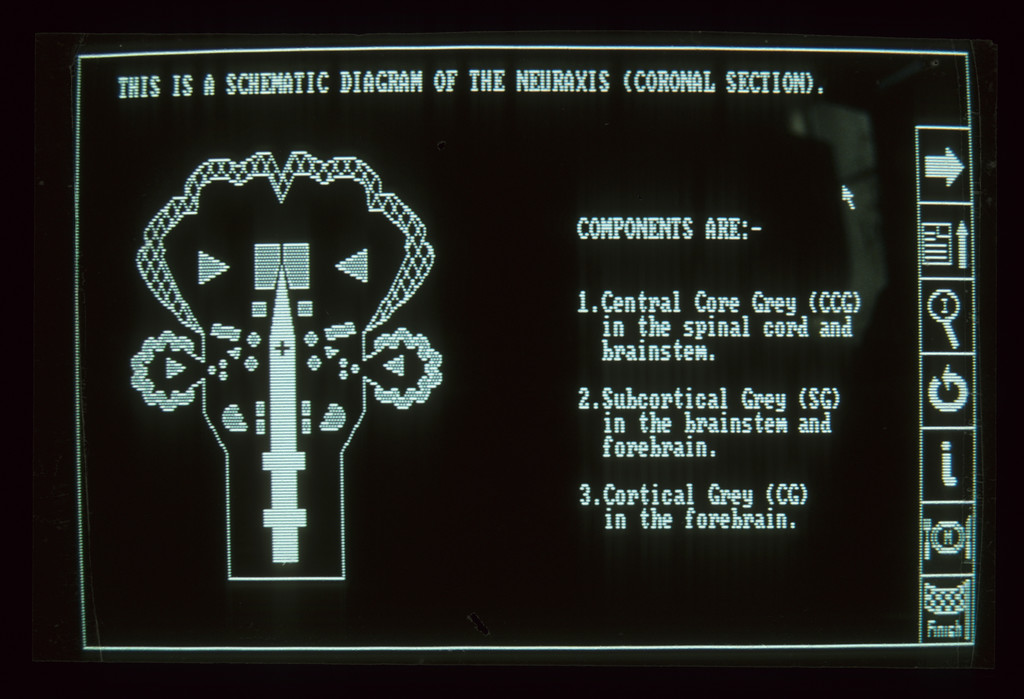
This image is a screenshot from The ‘HNS Browser’, 1987. Showing the small minimal menu of buttons; and the ‘HNS Schema’ in the “interrogation” mode (the ”interrogation” button selected and the mouse cursor as a magnifying glass).
The derivation of schemata as an exercise in structured thinking, simple analysis – discernment, naming and categorisation – and the construction of graphical models for the visualisation communication and sharing of thinking.
‘Frameworks’ is based on a simple theory of information and information modelling and is distilled from an original and evolutionary series of information modelling tools and demonstrator applications prototyped during the 1990s, involving engagement with a community of users: domain and system experts, authors, teachers, learners and network administrators.
‘Frameworks’ is essentially visual and object-oriented; about the representation and communication of thinking and understanding in the form of simple graphical models.
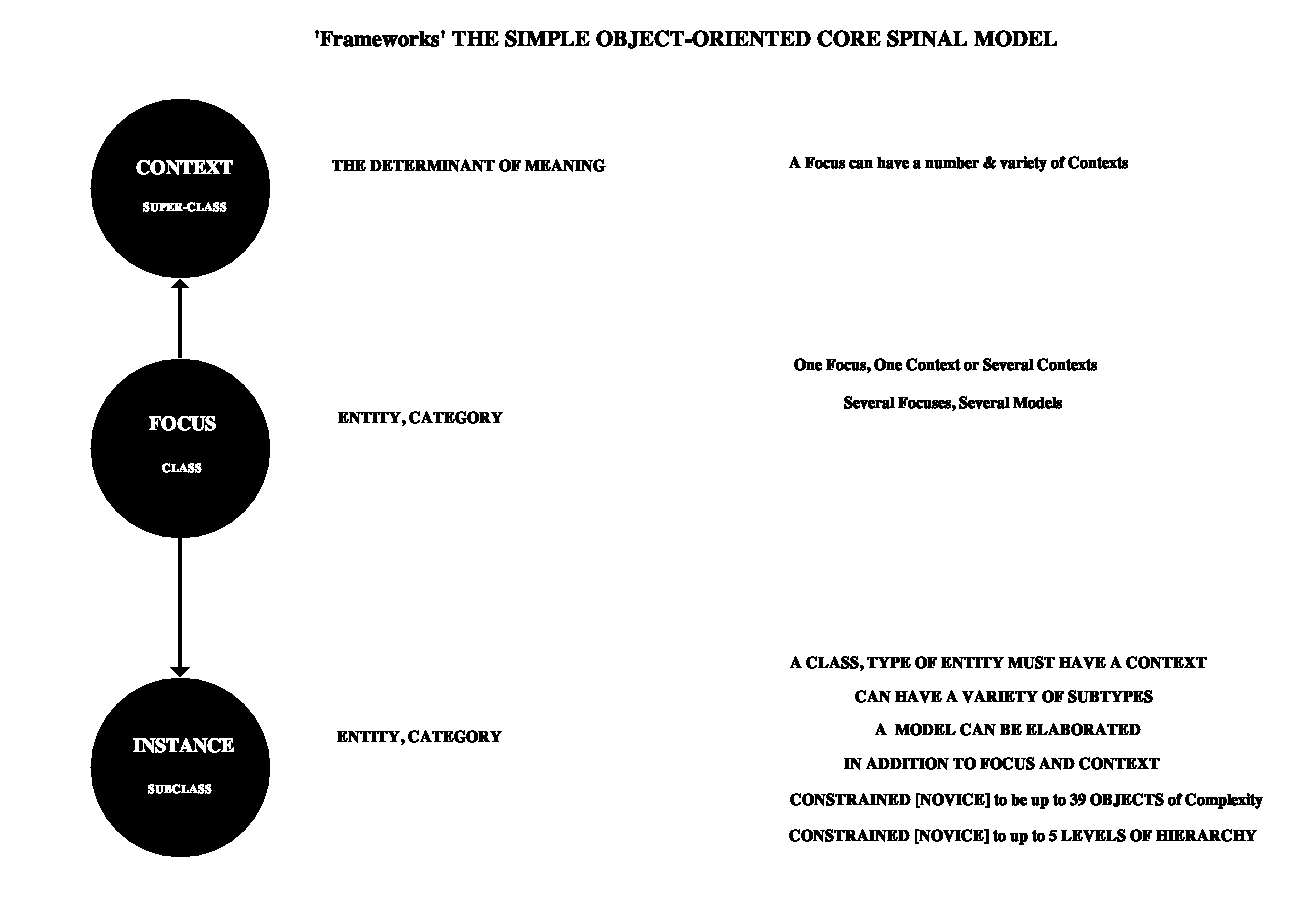
This image depicts the ‘Frameworks’ Core Spinal Model: of Focus and Context, and Instance, and explaining something of the ‘Frameworks’ Methodology for the Elaboration of Thinking Models around this simple object-oriented hierarchy.
Thinking models are constructed – employing the Prototype Tool – around the hierarchical spinal model.
The vision and the ideas, the design and the methodology and the ‘Frameworks’ tool – started and evolved as sketches in a notebook.
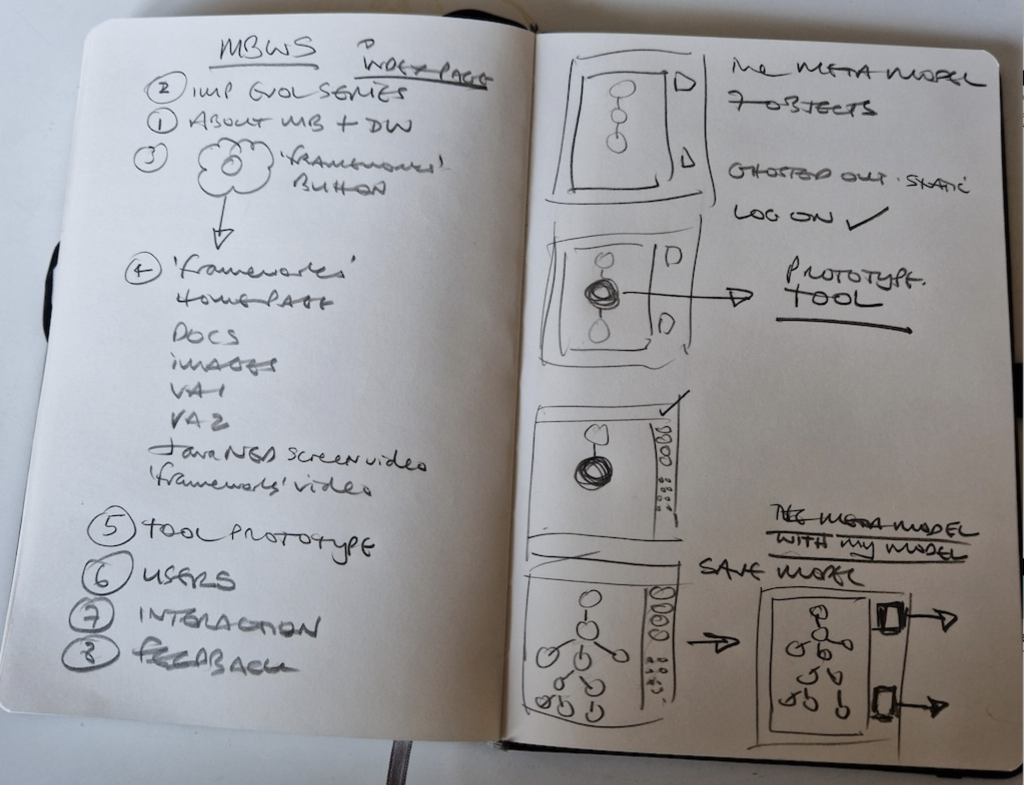
This image depicts – on the left – the Magic Browser Website with The ‘Frameworks’ Browser with access to the TOOL Prototype linking to the ‘Frameworks’ Meta Model – depicted on the left – (Static, composed of 7 Objects, ghosted out) – leading to the Meta Model (“active & interactive”, with Focus Node highlighted) – leading to the Current Prototype Tool with the Focus Node highlighted – inviting the First Step in the Methodology of Model Construction: to specify and name the Focus of Your Thinking – and the Second Step which is Elaboration of Your Model (rule based and constrained) – leading to Saving Your Model – the Model displayed back in the Meta Model – now with the Stuff Box and Elaborate Button active – leading to the options for the Thinker Modeller – to Share Their Model, to Elaborate/Edit Their Model, or to go out into the Digital Infospace and discern and acquire to link into Their Model – employing the Stuff Box as the first port of call.
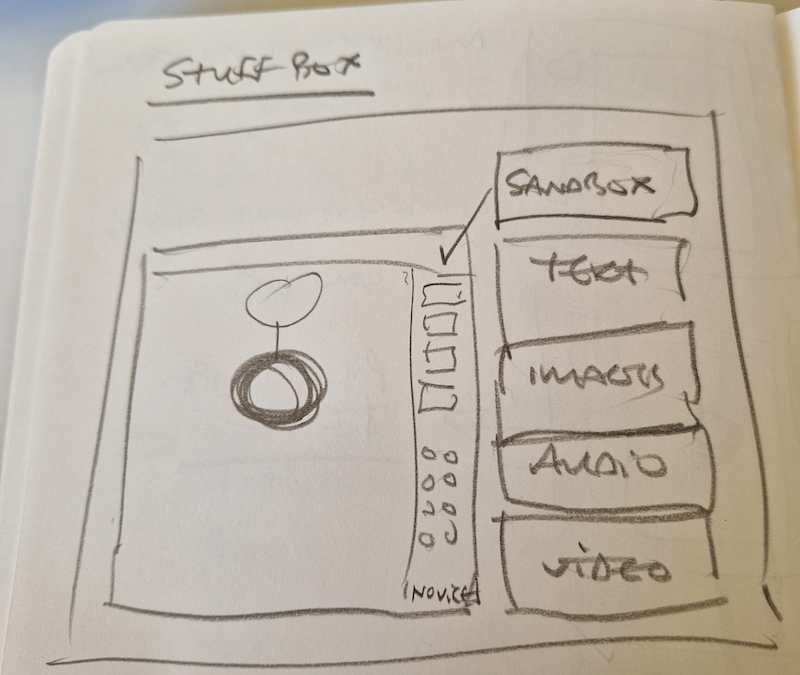
This image depicts the Stuff Box which encapsulates the ‘Sandbox” where Stuff is first situated ready for checking and verification before linking into the Model; various folders for stuff sorted for linking and …… the Tool (the Current Prototype) with the Focus Node highlighted – inviting the Thinker Modeller to specify and name the Focus as the First Step in the step-by-step modelling ……
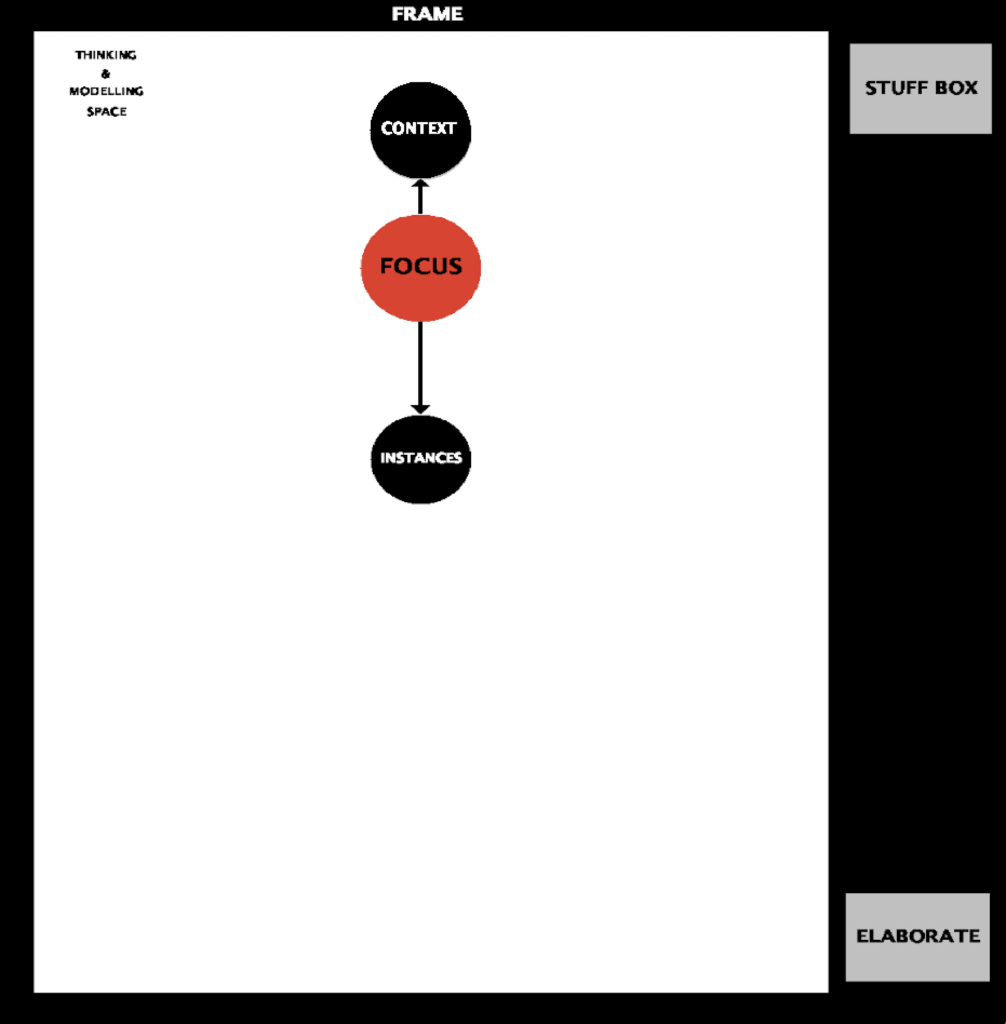
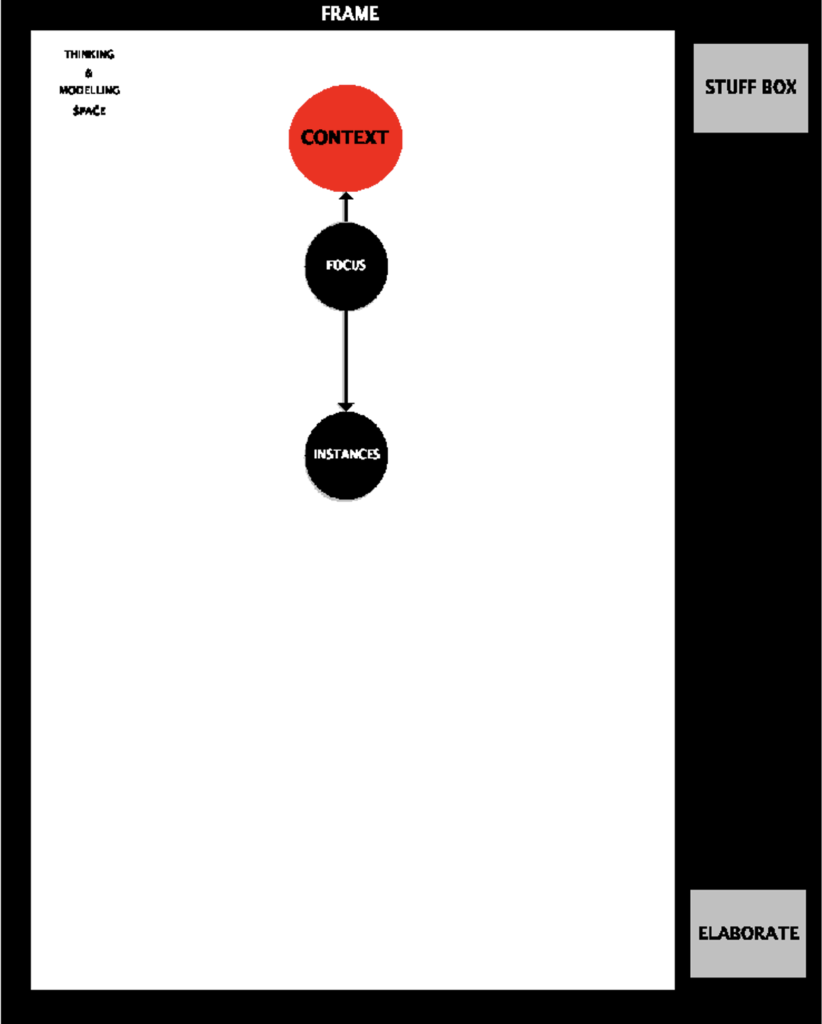
This image depicts the ‘Frameworks’ Meta Model with the Focus Node highlighted – on the left – as the Thinker Modeller is engaged with the ‘Frameworks’ with a view, a purpose, to construct a model of their thinking – where the First Step of model construction is to specify and name the Focus – and with the Context Node highlighted – on the right – where the Second Step of model construction is to specify and name the Context.
Following this design methodology – these and all the modelling and elaboration steps are conducted in the Thinking and Modelling Space of the Prototype Tool.
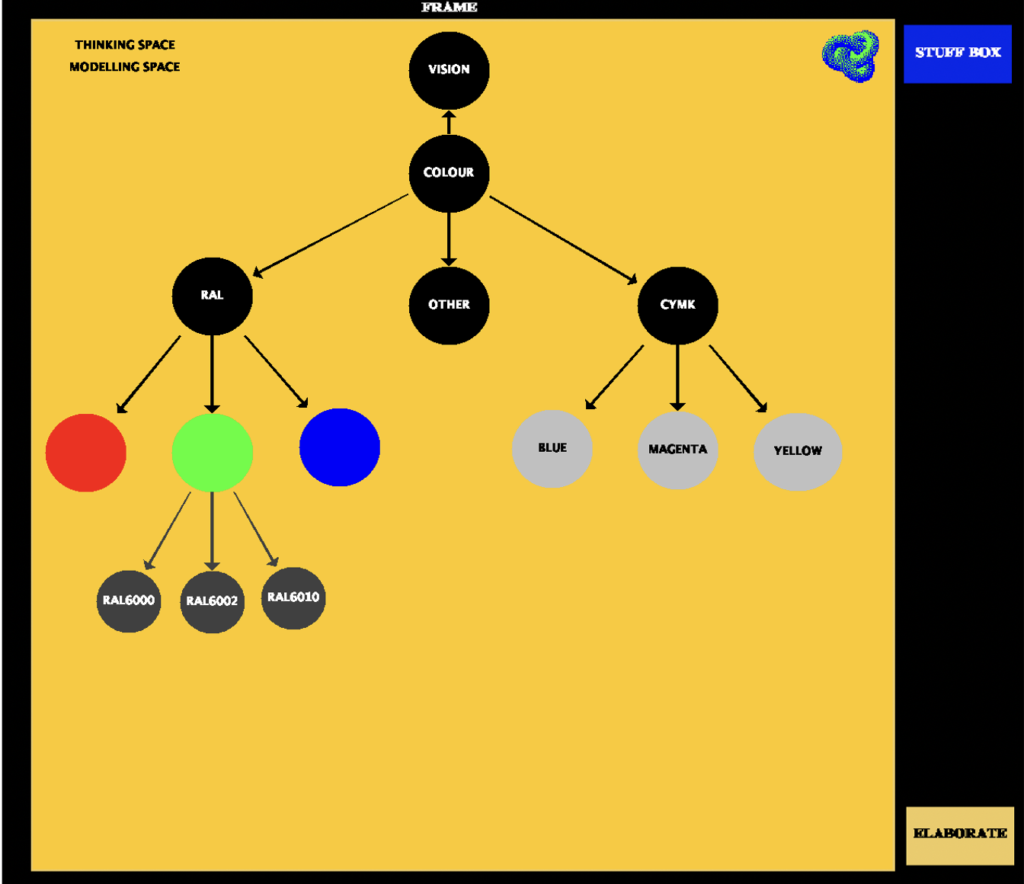
This image depicts an Example ‘Frameworks’ Thinking Model – constructed with the Prototype Tool and saved to the Meta Model Thinking & Display Space. Here the ‘Frameworks’ Meta Model is depicted with the Thinking Model displayed – in the Thinking & Display Space – this Example Model with a Focus: Colour and with the Context: Vision – the Meta Model now with Stuff Box and Elaborate Button active. The Thinker Modeller may choose to Share Their Mode, to further Elaborate (or Edit) Their Model (selecting the Elaborate Button), or to go out and acquire Stuff to link into Their Model.
This Model has 3 Subtypes/varieties of Focus and this modelling is at the Novice Level (of constraint).
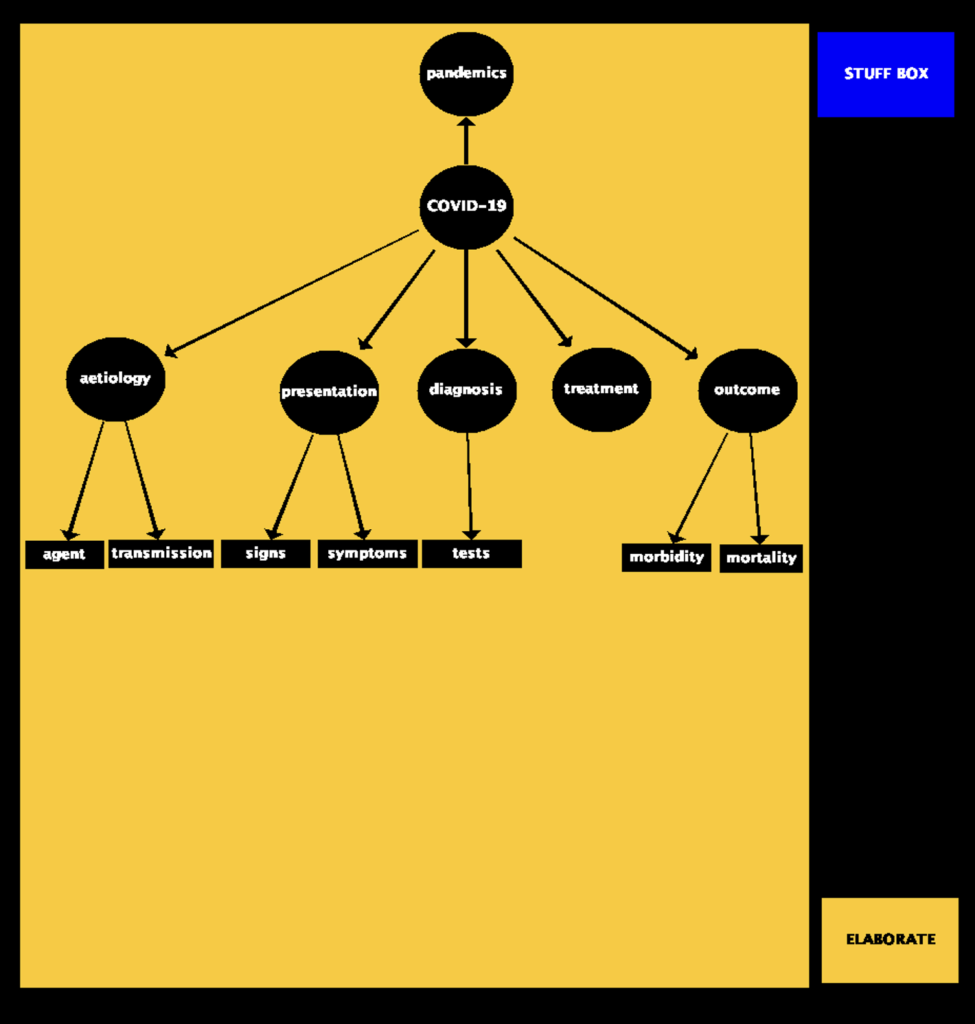
This image depicts an Example ‘Frameworks’ Thinking Model – here with a Focus: COVID-19 and the Context: Pandemics – displayed in the Thinking & Display Space of the ‘Frameworks’ Meta Model – with Stuff Box and Elaborate Button active – where the Thinker Modeller may select the Elaborate Button to edit or further elaborate the Model – in which case they would find their Model in the Prototype Tool Thinking & Modelling Space ETC
This Model has 5 Subtypes/varieties of Focus and this modelling is at the Intermediate Level (of constraint).
The ‘Frameworks’ Methodology and Prototype Tool is problem-led, simple and generic. The ‘Frameworks’ Project is a continuation of the evolutionary series of information modelling prototypes, typically developed as user-centred ‘Type C’ projects (Engelbart, 1973; Kay & Sikka, 2016) – small, speculative “Blue Plane, Blue Skies” projects – relatively inexpensive, requiring few people – and in short time-frames – developing tangible, usable and testable tools and demonstrator applications.
From ideas – to a vision. From the “very theoretical” and the abstract – to tangible prototypes – built by working with a community of users. Prototype tools and applications that can be tested, evaluated and evolved.
‘Frameworks’ is essentially visual and encourages visual thinking and thinking in terms of objects, categories and simple hierarchies.
The Methodology provides a simple way to structure simple graphical models as representation of thinking – in a step-by-step process of construction. It provides the thinker who would be modeller – with a simple object-oriented device – the ‘Frameworks’ Meta Model composed of Frame, “Thinking & Modelling Space” which is effectively the Model Display Space, a Core Spinal Model of Focus, Context and Instance, and integral to Frame: Stuff Box and Elaborate Button. When engaged and logged on to ‘Frameworks’ the thinker/modeller is provided with the Meta Model which becomes active – highlighting the Focus Node – and the first step in constructing a model is to select the highlighted Focus Node. This selection provides the modeller with the ‘Frameworks’ Tool: “the Intelligent Frame” as a simple interactive device for the guided and constrained, rule-based, step-by-step construction of simple graphical models of thinking. When constructed, models may be saved, back to the Thinking & Display Space of the Meta Model – then shared. They may be further elaborated/edited (upon selection of the elaborate Button, now active) and/or Stuff acquired from the digital world and digital infospace, and moved/downloaded into the Stuff Box (now active), to be linked into the model.
Thinking models are constructed – employing the Prototype Tool – around the hierarchical spinal model. The idea is that through a process of discerning, simple analysis, naming and categorisation of low granularity elements – the elaboration of a simple graphical minimal and meaningful models – Thinking Models – Structured Models of Thinking and Understanding – may be constructed through a simple analysis of from large and complex systems and domains and large collections of ideas.
The Current Prototype Tool: “The Intelligent Frame” – is active and interactive – providing the thinker/modeller with a simple framed and constrained rule-based modelling experience. To manage and reduce scale and complexity to manageable proportions.
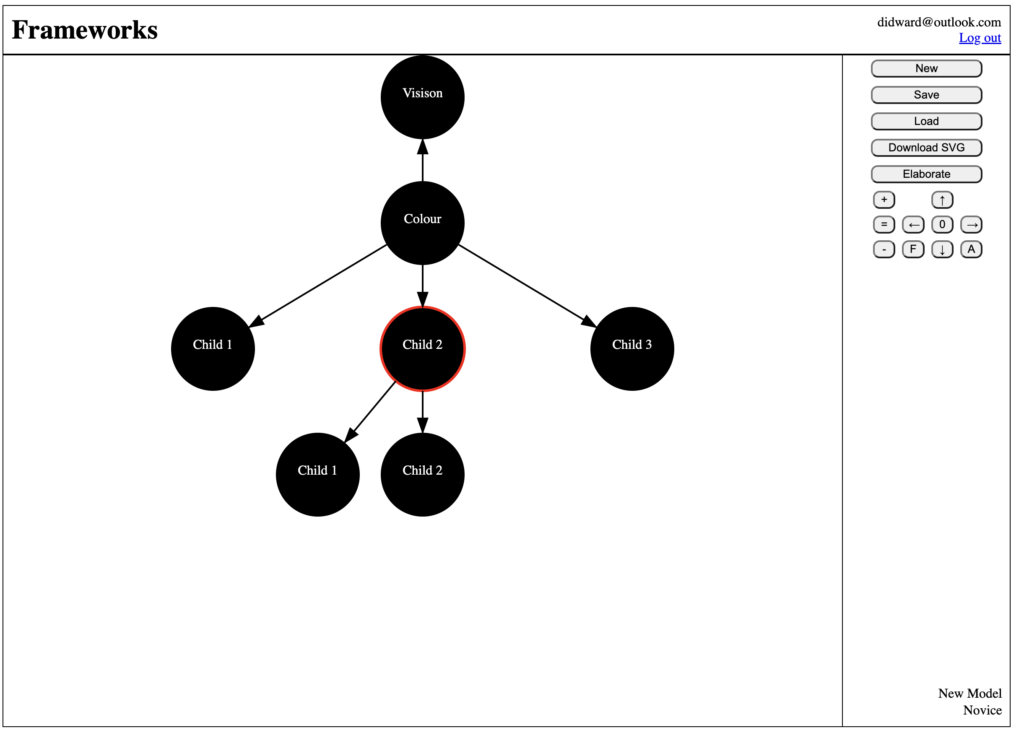
This image is s screenshot of the ‘Frameworks’ Prototype Tool: “The Intelligent Frame”.
Here, called the “Prototype Tool” because the idea is that under development and provided to prospective thinker/modellers so that they can engage and construct models of their thinking – the tool may be tested and evaluated and in an iterative process, perhaps modified according to feedback.
See: ‘Frameworks’ Menu
A current focus in the digital world is on ‘UX Design’, ‘Working In the Open’, ‘Design Informatics’ and ‘Data-Driven Creative Informatics’.
‘Frameworks’ is about design; about exploration and prototyping simple tools – the user experience creativity with minimum barriers: technical and cognitive; about graphical user interfaces as models of independent thinking; about thinking-led informatics.
The Book: “’Frameworks’: Making Sense of It All in The Age of Big Information; A Simple Methodology for Structured Thinking” is aimed at teachers and their pupils and foundational education. In the 21st Century digital world of “big information”, information chaos and overload, misinformation, disinformation, truth and alternative truth, and opinion masquerading as fact – we need to educate the next generation of citizens of the world in an awareness of the scale and complexity of the world – its many domains and systems – and in capabilities and a subset of skills including foundational literacies in information, communication and informatics which they will need to hit the ground running into the world of work and to confront the vital global imperatives that must be dealt with.
‘Frameworks’ provides a solution.
